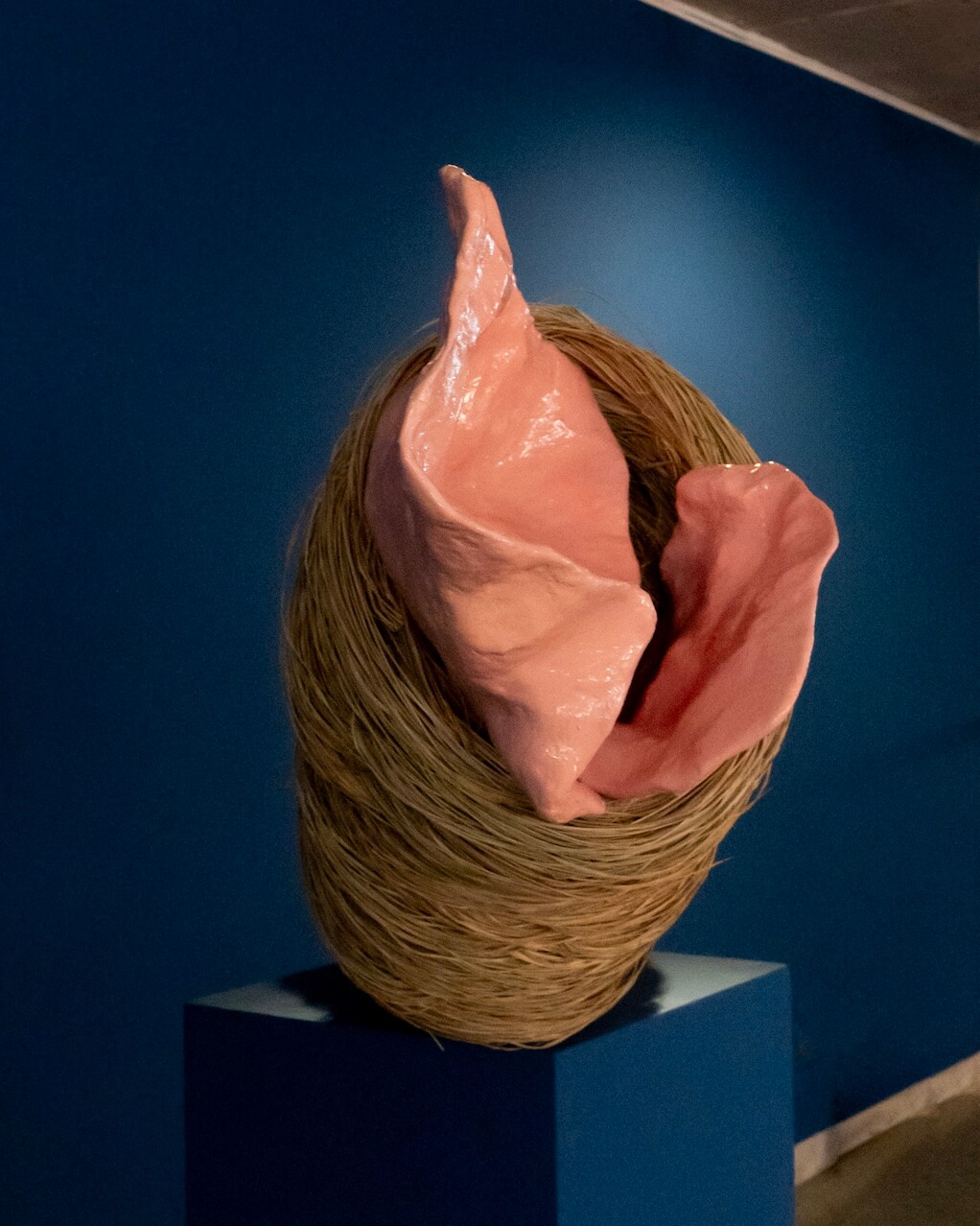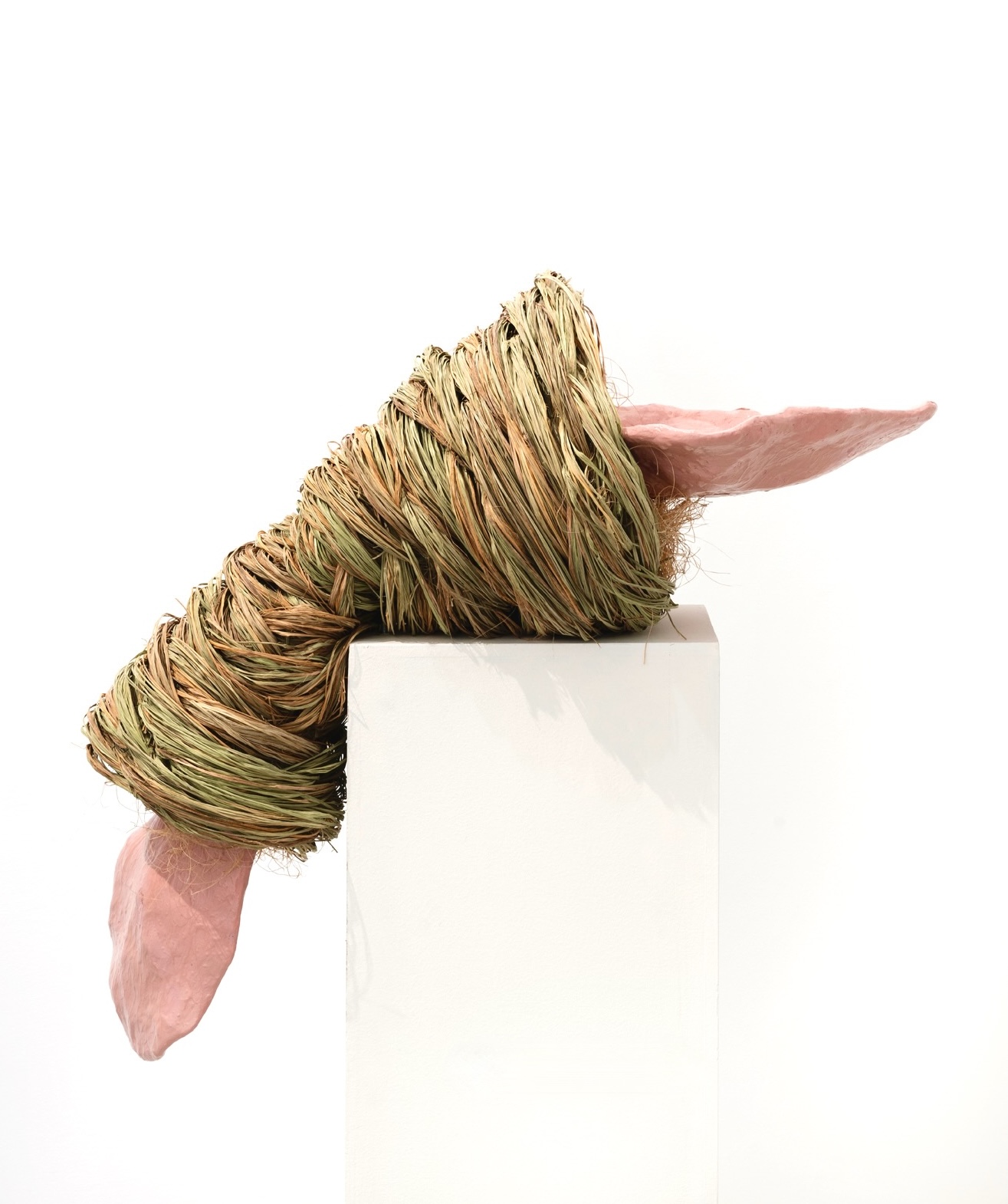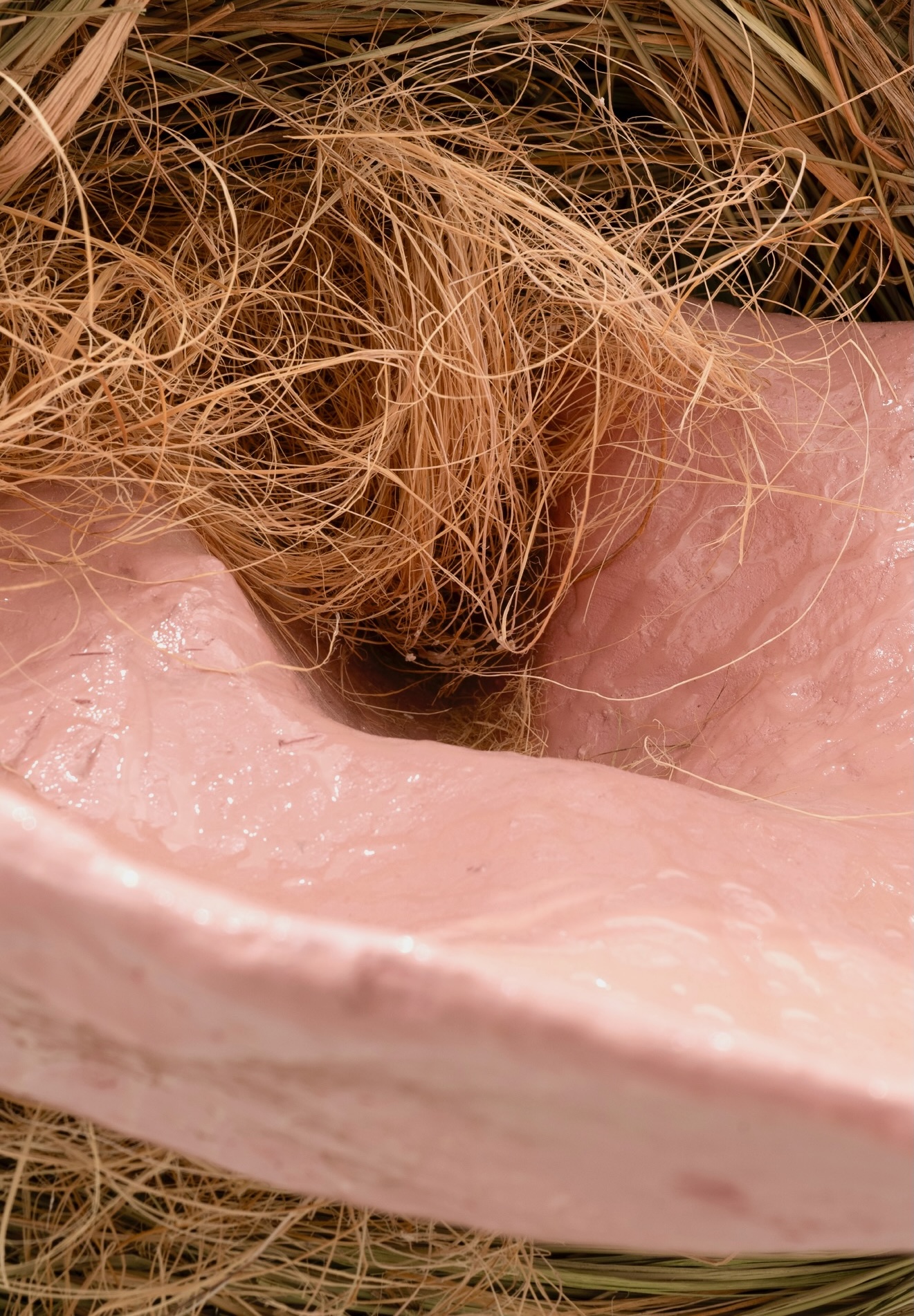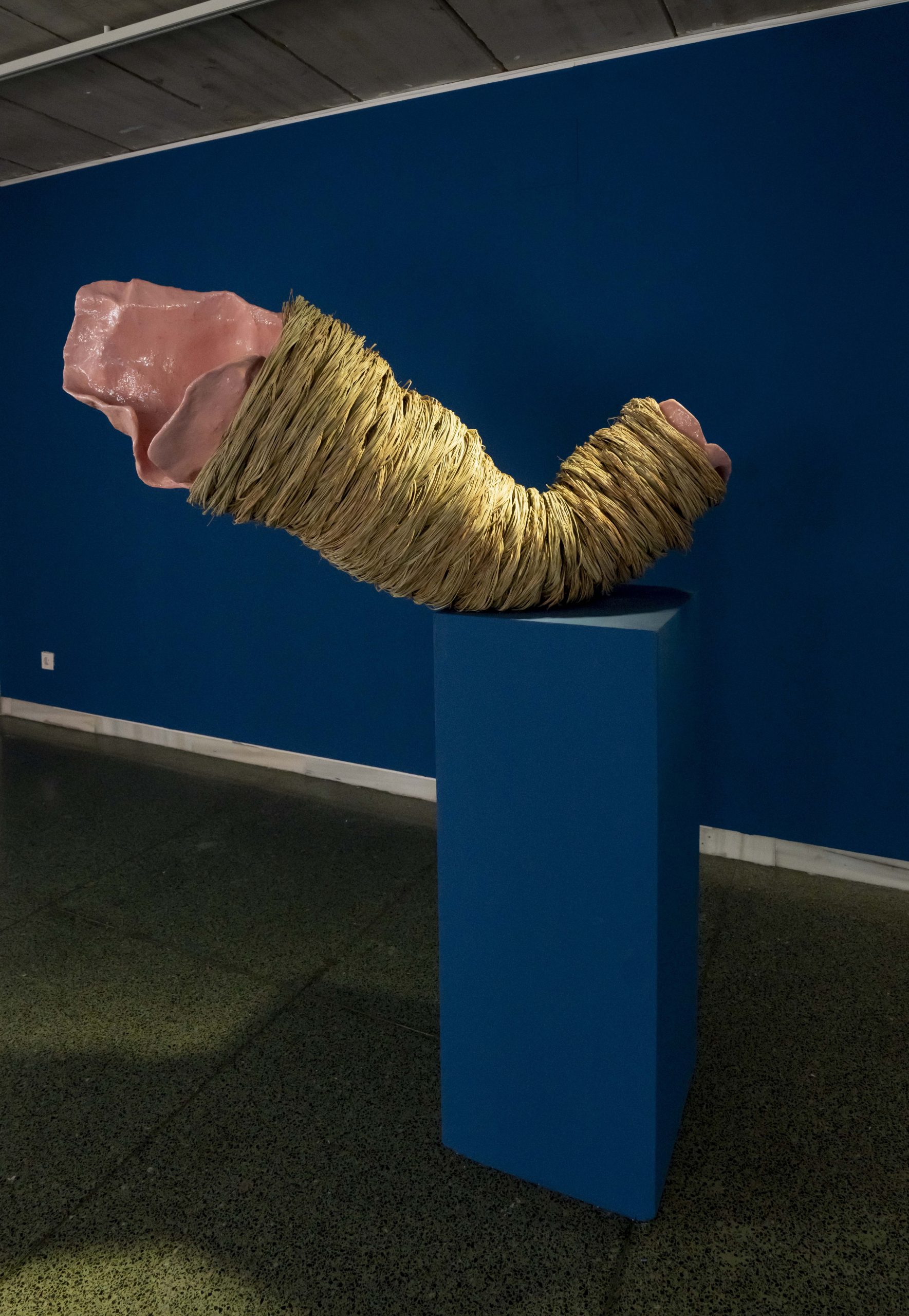ser húesped




ser húesped
Esparto, escayola, resina y pintura.
95x40x35 cm
Seleccionada por Fundación Sandretto
y Sala El Brocense.
2024
ESP
El origen etimológico de la palabra “huésped”, del vocablo latín “hospes” se refiere inicialmente al anfitrión o señor de los forasteros. Así se emplea en biología, por ejemplo, en el vínculo establecido entre parásito-huésped. Posteriormente se aplicó la misma palabra al término inverso, que nombra aquel forastero que se aloja en casa del anfitrión.
Hospedador y ocupante se miran, se tocan, son uno.
¿Quién ocupa a quién? ¿Quién hospeda?
La obra parte de la propia exploración de la artista y su corporeidad, tomando muestras y moldes de sus pliegues, extremidades, llevados a una escala superior para descontextualizar atributos convencionales. Bajo una la agotadora exigencia de autodefinir nuestra identidad, nuestros límites, nuestras fronteras, nuestras interacciones como especies…la artista propone una vía formal en la que etimología y naturaleza liberan las tensiones ejercidas socialmente entre cuerpos e individuos.
ENG
The etymological origin of the word “huésped,” from the Latin term “hospes,” initially referred to the host or master of strangers. This usage is preserved in biology, for instance, in the relationship between parasite and host. Later, the same word was applied in the inverse sense, referring to the stranger who lodges in the host’s home. Host and guest gaze at each other, touch each other, become one.
Who occupies whom? Who hosts whom?
The work originates from the artist’s own exploration of her corporeality, taking samples and casts of her folds and limbs, scaled up to a larger size to decontextualize conventional attributes. Amid the exhausting demand to self-define our identity, our limits, our borders, our interactions as species… the artist proposes a formal avenue where etymology and nature release the socially imposed tensions between bodies and individuals.